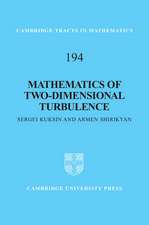The Boundary-Layer Method in Diffraction Problems: Springer Series in Electronics and Photonics, cartea 3
Autor V. M. Babic Traducere de E. F. Kuester Autor N. Y. Kirpicnikovaen Limba Engleză Paperback – 21 mar 2012
Din seria Springer Series in Electronics and Photonics
-
 Preț: 389.49 lei
Preț: 389.49 lei - 15%
 Preț: 644.18 lei
Preț: 644.18 lei - 15%
 Preț: 653.79 lei
Preț: 653.79 lei - 15%
 Preț: 648.74 lei
Preț: 648.74 lei -
 Preț: 391.02 lei
Preț: 391.02 lei -
 Preț: 393.13 lei
Preț: 393.13 lei - 15%
 Preț: 645.47 lei
Preț: 645.47 lei -
 Preț: 389.11 lei
Preț: 389.11 lei -
 Preț: 380.45 lei
Preț: 380.45 lei -
 Preț: 384.09 lei
Preț: 384.09 lei -
 Preț: 394.29 lei
Preț: 394.29 lei - 15%
 Preț: 643.16 lei
Preț: 643.16 lei - 18%
 Preț: 730.35 lei
Preț: 730.35 lei - 15%
 Preț: 526.35 lei
Preț: 526.35 lei - 15%
 Preț: 638.11 lei
Preț: 638.11 lei -
 Preț: 390.63 lei
Preț: 390.63 lei - 15%
 Preț: 641.03 lei
Preț: 641.03 lei - 15%
 Preț: 637.46 lei
Preț: 637.46 lei -
 Preț: 396.24 lei
Preț: 396.24 lei -
 Preț: 395.09 lei
Preț: 395.09 lei -
 Preț: 381.81 lei
Preț: 381.81 lei -
 Preț: 395.47 lei
Preț: 395.47 lei - 15%
 Preț: 646.30 lei
Preț: 646.30 lei -
 Preț: 383.93 lei
Preț: 383.93 lei - 15%
 Preț: 641.71 lei
Preț: 641.71 lei -
 Preț: 391.99 lei
Preț: 391.99 lei -
 Preț: 395.09 lei
Preț: 395.09 lei -
 Preț: 390.46 lei
Preț: 390.46 lei - 15%
 Preț: 641.53 lei
Preț: 641.53 lei - 15%
 Preț: 642.18 lei
Preț: 642.18 lei - 15%
 Preț: 642.18 lei
Preț: 642.18 lei - 18%
 Preț: 949.23 lei
Preț: 949.23 lei
Preț: 633.35 lei
Preț vechi: 745.11 lei
-15% Nou
Puncte Express: 950
Preț estimativ în valută:
121.20€ • 129.60$ • 101.05£
121.20€ • 129.60$ • 101.05£
Carte tipărită la comandă
Livrare economică 18 aprilie-02 mai
Preluare comenzi: 021 569.72.76
Specificații
ISBN-13: 9783642883934
ISBN-10: 3642883931
Pagini: 152
Ilustrații: VI, 140 p.
Dimensiuni: 155 x 235 x 8 mm
Greutate: 0.22 kg
Ediția:Softcover reprint of the original 1st ed. 1979
Editura: Springer Berlin, Heidelberg
Colecția Springer
Seria Springer Series in Electronics and Photonics
Locul publicării:Berlin, Heidelberg, Germany
ISBN-10: 3642883931
Pagini: 152
Ilustrații: VI, 140 p.
Dimensiuni: 155 x 235 x 8 mm
Greutate: 0.22 kg
Ediția:Softcover reprint of the original 1st ed. 1979
Editura: Springer Berlin, Heidelberg
Colecția Springer
Seria Springer Series in Electronics and Photonics
Locul publicării:Berlin, Heidelberg, Germany
Public țintă
ResearchCuprins
Translator’s Introduction.- 1 Introduction.- 2 The Ray Method.- 2.1 The Starting Point: Formulas for the Scalar Case.- 2.2 The Eikonal Equation; Rays; Wave Fronts.- 2.3 Ray Coordinates.- 2.4 Fundamental Recurrence Formulas.- 2.5 Reflection of a Wave Given by a Ray Expansion.- 3 The Caustic Problem.- 3.1 Ray Expansion in the Neighborhood of a Caustic.- 3.2 The Analytic Nature of the Eikonal for Incoming and Outgoing Waves Near a Caustic.- 3.3 Ray Series in (s,n) and (s,?) Coordinates.- 3.4 The Field in a Boundary Layer Surrounding the Caustic.- 3.5 Fundamental Formulas.- 4 Whispering Gallery and Creeping Waves.- 4.1 Whispering Gallery Waves.- 4.2 Whispering Gallery Quasimodes.- 4.3 Creeping Waves.- 4.4 The Friedlander-Keller Solution (Diffraction Rays).- 4.5 Matching of Creeping Waves and Diffraction Rays.- 5 Oscillations Concentrated in the Neighborhood of a Ray (Gaussian Beams).- 5.1 Rays in the First Approximation.- 5.2 Derivation of the Boundary-Layer Equation.- 5.3 Solution of the System of Recurrence Equations for Vj.- 5.4 Stability of an Extremal Diameter of a Region.- 5.5 Quasimodes of the “Bouncing-Ball” Type in the First Approximation.- 5.6 Construction of Higher Approximations.- 6 Shortwave Diffraction from a Smooth Convex Body.- 6.1 The Parabolic Equation Method.- 6.2 The Analytic Nature of the Functions $${{\rm{\bar V}}_{\rm{j}}}$$and Vj..- 6.3 The Boundary Layer in the Deep Shadow Zone.- 6.4 Continuation of the Solution from the Vicinity of the Point C into the Transition Region.- 6.5 Analytic Representation of the Incident Wave in the Neighborhood of the Limiting Ray.- 6.6 System of Recurrence Equations for the Neighborhood of the Limiting Ray.- 6.7 Extension of the Transition Region Formulas into the Neighborhood of the Limiting Ray.- 6.8Formulas for the Field in the Shadow and in the Penumbra.- 7 The Problem of an Oscillating Point Source.- 7.1 The Ray Method for a Central Field of Rays.- 7.2 Expansion in the Transition Region.- 7.3 Expansions in the Neighborhood of the Origin.- 8 Survey of Literature.- References.














